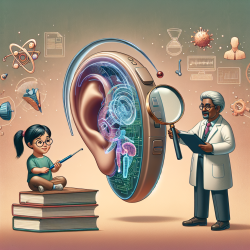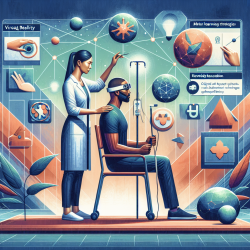As professionals dedicated to supporting individuals with hearing impairments, it's crucial to ensure that hearing aids perform optimally in real-life situations. Traditional methods of measuring hearing aid performance often fall short in predicting how devices will function in the diverse environments users encounter daily. The research paper "Consumer-Based Electroacoustic Hearing Aid Measures" by Donald G. Jamieson offers groundbreaking insights into developing testing protocols that more accurately reflect the real-world performance of hearing aids.
Standardized procedures for hearing aid measurement, while useful, do not adequately address the complexities of real-life sound environments. Jamieson's work emphasizes the need for consumer-based measures, which are designed with the end-user's experience in mind. By focusing on the hearing aid wearer, these measures aim to provide data that is directly relevant to everyday listening situations.
To improve the skills of practitioners and enhance the quality of service provided to hearing aid users, it is essential to consider the following key areas highlighted by Jamieson:
- Audibility of Desirable Sounds: It's crucial to measure to what extent hearing aids make target sounds like speech and music audible to the wearer. Traditional methods may not accurately predict the audibility of these complex signals.
- Utilization of the Listener's Full Dynamic Range: Ensuring that hearing aids use the full dynamic range of the listener without causing discomfort is vital for a natural listening experience.
- Minimization of Discomfort from Everyday Sounds: Measures should assess whether sounds from daily life will cause discomfort while wearing the hearing aid, which could deter users from using their devices.
- Speech Intelligibility and Quality: The degradation of speech intelligibility and quality in various listening environments must be quantified to ensure hearing aids perform well in noisy or challenging situations.
- Impact of Hearing Aid Processing: Understanding how changes in hearing aid processing affect the wearer's perception of sound quality and performance across the device's operating range is crucial for customization and improvement.
Jamieson's research proposes new test protocols that are oriented towards the hearing aid wearer, offering a more accurate characterization of how hearing aids perform in real life. These consumer-based tests are a significant departure from traditional electroacoustic measures, providing valuable insights for audiologists and hearing aid manufacturers aiming to improve the user experience.
Implementing these outcomes in practice requires a shift towards more sophisticated testing environments that can simulate real-life situations. Audiologists and hearing aid specialists should consider adopting these consumer-based measures in their assessments to ensure hearing aids meet the actual needs of their users. Additionally, further research in this area can help refine these measures and develop new testing protocols that even more closely mimic the acoustic environments encountered by hearing aid wearers.
For practitioners and researchers dedicated to advancing the field of audiology, Jamieson's work serves as a call to action. By focusing on the real-world performance of hearing aids, we can significantly improve the quality of life for individuals with hearing impairments.
To read the original research paper, please follow this link: Consumer-Based Electroacoustic Hearing Aid Measures.










